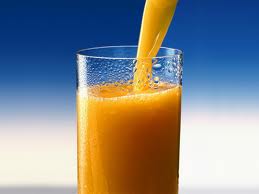This is another it what will be a long – too long – series of outbreak investigations where we have represented consumers in what I hope will be a cautionary tale, and a learning experience, for manufacturers of food.
 During June of 1999, both the Washington State Health Department and the Oregon Health Division independently investigated clusters of diarrheal illness attributed to Salmonella serotype Muenchen infections in each state. As of July 13, 1999, 15 states and two Canadian provinces had reported 207 confirmed cases associated with this outbreak; additional 91 cases of S. Muenchen infection were reported, and were still under investigation. By early July 1999, 85 persons with this illness were identified in Washington State alone.
During June of 1999, both the Washington State Health Department and the Oregon Health Division independently investigated clusters of diarrheal illness attributed to Salmonella serotype Muenchen infections in each state. As of July 13, 1999, 15 states and two Canadian provinces had reported 207 confirmed cases associated with this outbreak; additional 91 cases of S. Muenchen infection were reported, and were still under investigation. By early July 1999, 85 persons with this illness were identified in Washington State alone.
Epidemiological investigations by the health departments linked the outbreak of this relatively rare strain of Salmonella to unpasteurized orange juice products produced by Sun Orchard, Inc., an Arizona based company. Similar strains of Salmonella were eventually detected in unopened containers of Sun Orchard juice products, and in blenders where smoothies were made. The Sun Orchard product was distributed in a variety of forms to retail stores, restaurants and other food service institutions. The unpasteurized orange juice was identified as freshly squeezed or fresh orange juice, and was also sold in a frozen form to restaurants and other food retailers. Genetic matches were quickly established between the lab results of the stool cultures from victims and the Sun Orchard product.
Sun Orchard voluntarily announced a recall of all of its unpasteurized orange juice products on June 25, 1999. The Food and Drug Administration, on July 10, 1999, issued a nationwide warning to consumers against drinking unpasteurized orange juice products distributed under a variety of brand names by Sun Orchard, Inc. due to the continuing reports of illness related to the product.
This was not the first time that unpasteurized orange juice has been implicated in a Salmonella outbreak. A 1995 outbreak occurred at Disneyland in Orlando, Florida, where 62 people were sickened in an outbreak caused by unpasteurized orange juice and inadequately sanitized processing equipment. Unpasteurized fruit juices have been otherwise implicated as the vehicle of transmission in at least 15 outbreaks in the United States during this century, involving pathogens including E. coli 0157:H7 and other Salmonella stereotypes.
In 1998, the FDA proposed Hazard Analysis and Critical Control Point (HACCP) procedures and labeling regulations to improve the safety of juice products. The FDA published a final rule in July of 1998 for the labeling of fruit and vegetable juices; it includes a warning statement advising consumers of the risk associated with drinking unprocessed juices. In October of 1998, however, the FDA announced an eight-month extension of the warning requirement for citrus juice manufacturers who met certain FDA criteria. As an alternative to selling unpasteurized juice with a warning label, citrus juice manufacturers could produce and sell unpasteurized citrus juice without warnings if they (1) established interim protection measures to identify and correct potential food safety hazards, and (2) developed, adapted and validated procedures that would achieve a five-log (100,000 fold) reduction in pertinent pathogens, including E. coli and Salmonella.
Sun Orchard was one of the citrus juice manufacturers who applied for, and obtained, an extension of the warning requirement, based upon its representation of compliance with the FDA extension criteria. Mark Isaacs, the president of Sun Orchard, was one of the leaders of the American Fresh Juice Council, a coalition of fresh juice makers involved in developing methods other than pasteurization for improving the safety of their products. At FDA sponsored workshops in the fall of 1998, Mark Isaacs reported that Sun Orchard had developed and was implementing a successful HACCP plan, that it had developed an innovative sanitation system that delivered well over a five-log reduction in microbial levels, and thus that the Sun Orchard plant qualified for temporary exemption from the requirement of warning labels.
It is now apparent that the Salmonella outbreak associated with the Sun Orchard product resulted from Sun Orchard’s decision to produce and sell a product that was instead blended from juice derived from a number of different sources. Sun Orchard proceeded to blend unpasteurized orange juice that it had produced in its own plant, through its own sanitation system process, with containers of unpasteurized orange juice that Sun Orchard purchased and had been produced in Mexico.
The blended juice from Mexico was eventually identified as the source of the Salmonella infection. A number of shipments of Mexican juice tested positive. The FDA eventually concluded that the hazardous bacteria came from the imported Mexican juice, which contained melted ice. The FDA border inspection of the orange juice had not included a test for Salmonella before this outbreak. Sun Orchard testing of the Mexican orange juice prior to the blending process had also failed to reveal the presence of the Salmonella bacteria.
The FDA issued a warning letter to Sun Orchard dated August 20, 1999, following its related investigation. The FDA expressed its concern that the addition of ice to the juice may have contributed to the Salmonella contamination, and also constituted adulteration of the orange juice product, as defined by Section 402(b) of the Food, Drug and Cosmetics Act. The FDA was particularly concerned due to the unpasteurized nature of the juice, given the lack of further treatment of the product to reduce the public health risk.
Ironically, Sun Orchard again recalled thousands of gallons of orange juice believed contaminated with Salmonella in November 1999. It was the second recall of contaminated juice in five months.